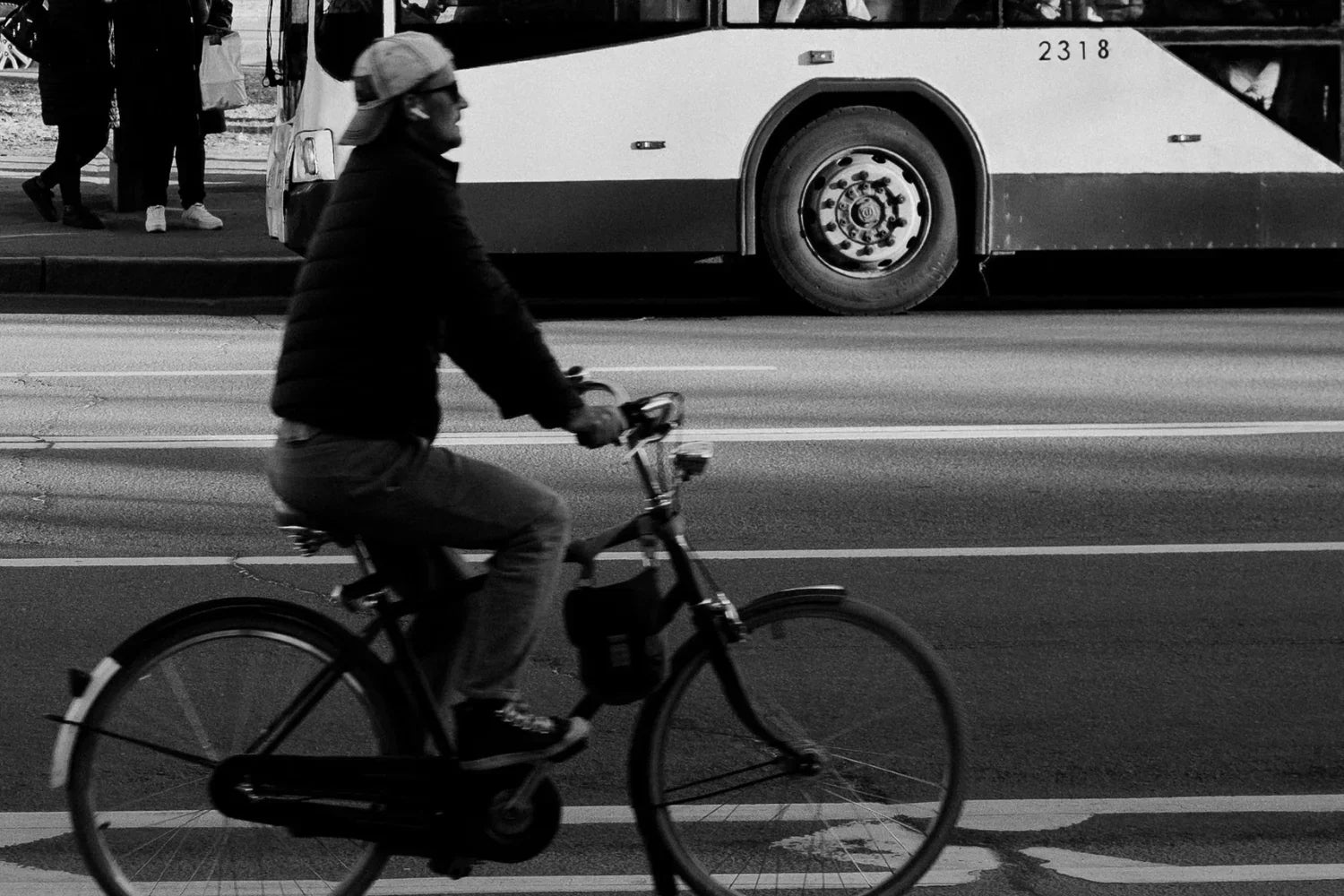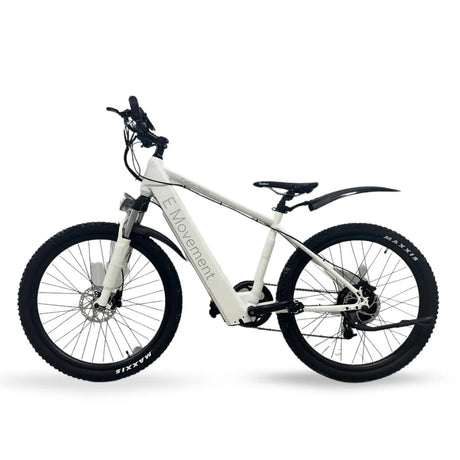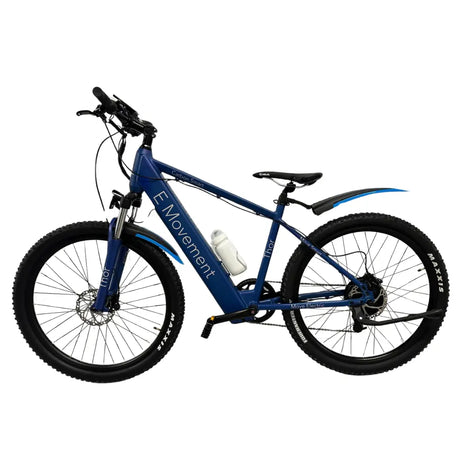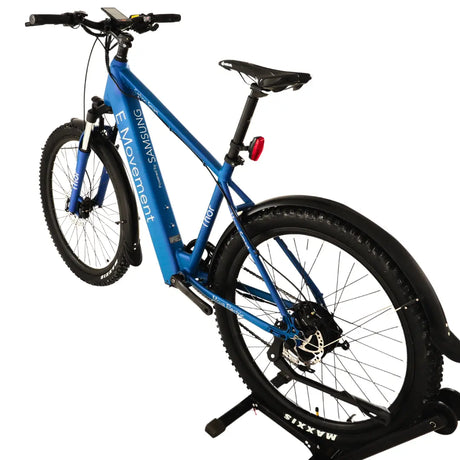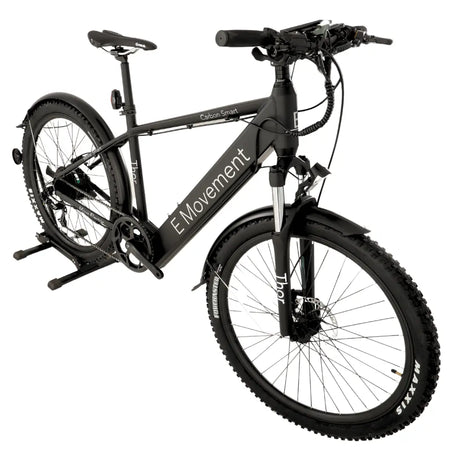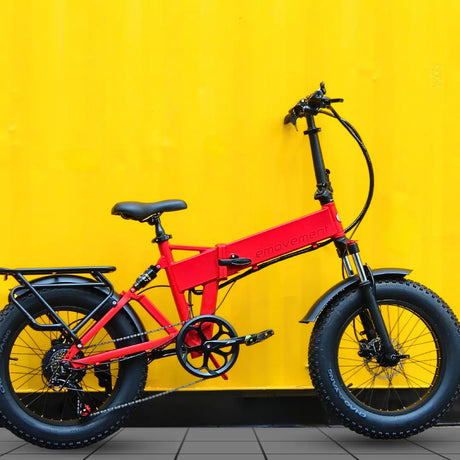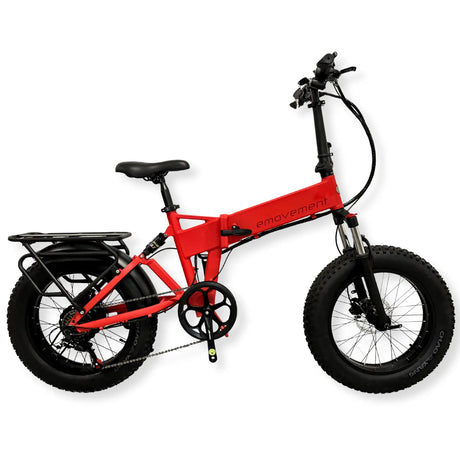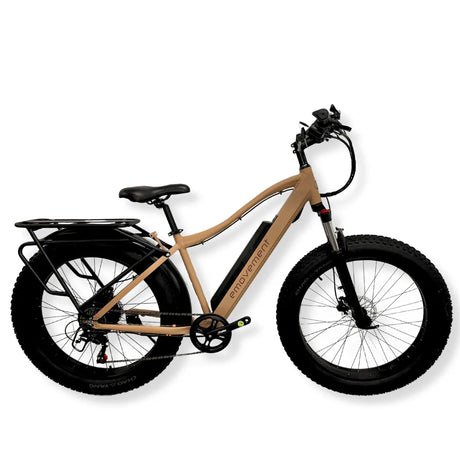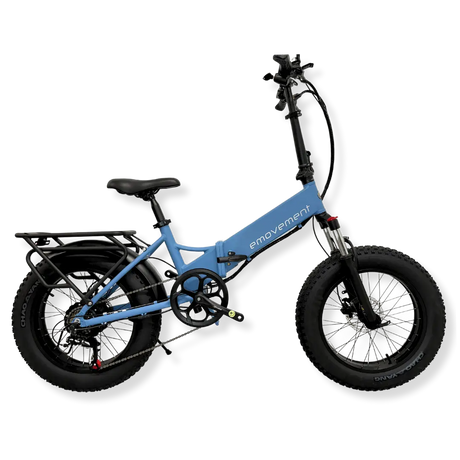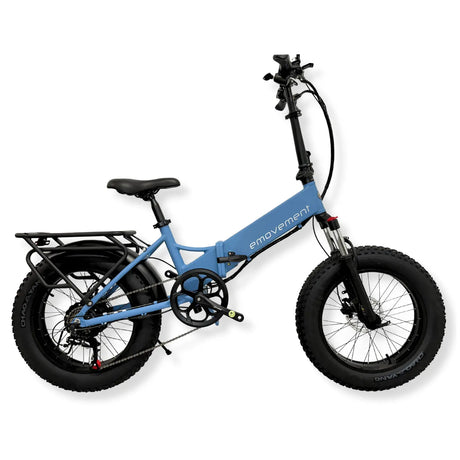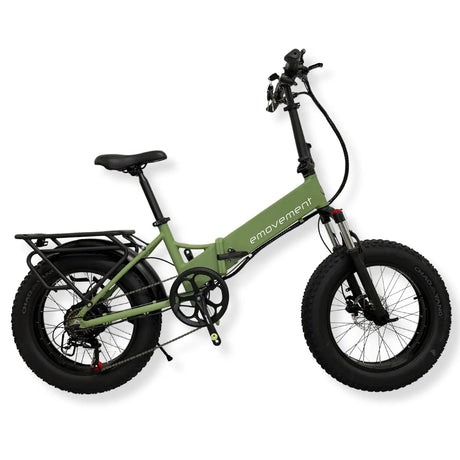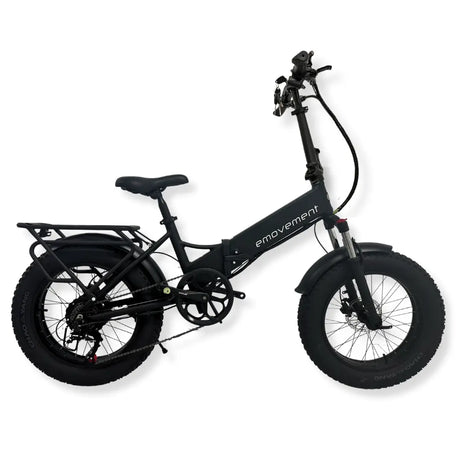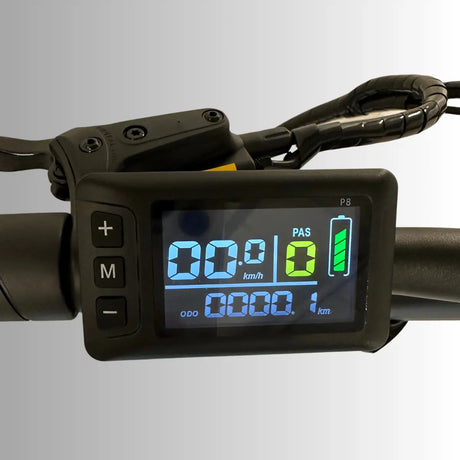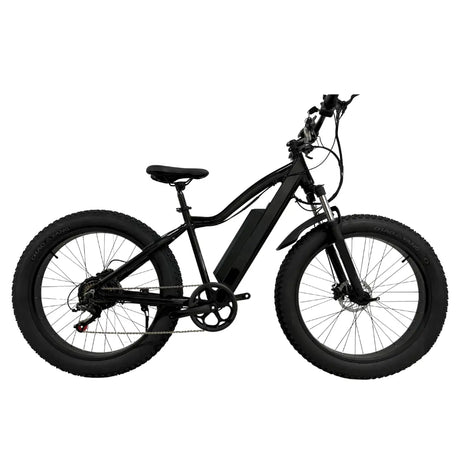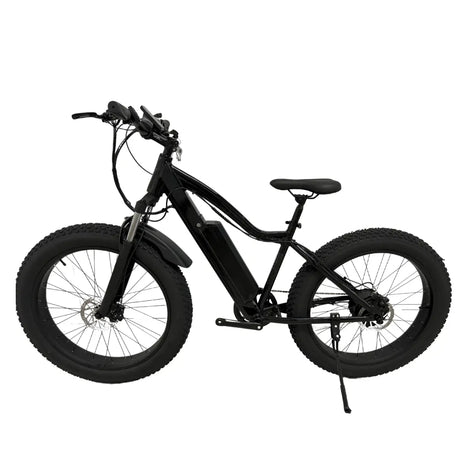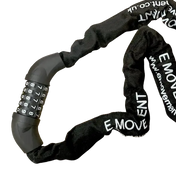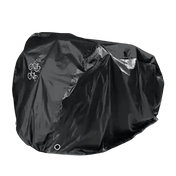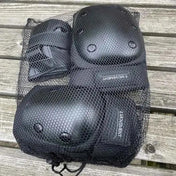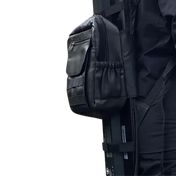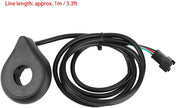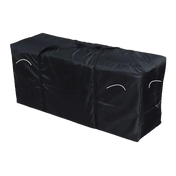Inside this Article:
Electric bikes have made the traditional cycling experience more enjoyable since you have to pedal with less strength and can go on longer rides. All of this is achieved through e-bicycles’ motors. There are different types of e-bike motors , and each has varying features which facilitate riders in different uses. Before buying an electric bike, you must understand how these different types operate and which one will best suit your riding style and surroundings.
Here we explore these types of electric bike motors and their considerations in detail.
Classification of E-Bike Motors
Each motor is adapted for varying uses, so understanding the different types of e-bike motors is crucial for choosing the right one to suit your needs . Let's explore these types in detail.

1. Based on Location
Hub Motors: They are the most common types of e-bike motors . The motor is placed directly into the wheel, in the front or the rear hub. This placement makes them simpler to add and more affordable. They also require less maintenance and offer a sleek look with the motor hidden in the wheel.
Front hub motors are located in the front wheel. They pull the bicycle forward, making the front wheel a decent placement to balance its weight and simplify installation. Front hub motors are ideal for flat terrain and light commuting. They are unsuitable for inclines and off-road trails since they lack traction. However, we never recommend front hub motors as they can make riders go off-balance.
Rear hub Motors sit in the back wheel, offering better traction and stability. This type of e bike motor provides a natural riding feel, resembling traditional bicycles. With them, you can handle hills and rough terrain more effectively. They are ideal for riders requiring extra power for challenging rides. However, rear hub motors are slightly more challenging to install and maintain. We recommend them as they hit the perfect balance between affordability and safety.
Mid-Drive Motors: These are positioned near the bike's bottom bracket to directly power the crank arms. This central placement offers better weight distribution and efficiency. Mid-drive motors are best suited for challenging terrains, providing excellent torque and power delivery. These types of e-bike motors are perfect for riders who seek off-road adventures. However, these motors come with a higher price tag and are difficult to install and maintain.

2. Based on Power Output
Low-Power Motors (250W): These pedelac motors cater to casual riders and commuters. They offer sufficient assistance for flat terrains and mild inclines. They are energy-efficient and extend battery life, making them ideal for urban environments and daily commuting. Low-power motors also meet legal power limits in most regions within the UK, ensuring you can ride on public roads without restrictions. These motors are perfect for those who prioritise simplicity and cost-effectiveness, offering a gentle boost that complements the rider's pedalling.
Medium-Power Motors (500W): This electric bicycle motor provides a balanced performance for various riding conditions. They deliver more power for tackling moderate hills and longer distances. These types of e-bike motors suit riders who need a versatile vehicle they can use for city commutes and light off-road trails. They conserve battery allowing riders to have longer rides and carry more weight on optimum performance. Medium-power motors are ideal for urban riders looking to commute using their bicycle, carry groceries, and on occasion enjoy the off-road adventure.
Please note that in the UK, ebikes with over 250W of power are treated as mopeds or motorcycles . This means they are subjected to different rules and laws. If you are considering investing in a medium or high-power motor we recommend reading up on these regulations .
High-Power Motors (750W and above) : These motors deliver robust performance for demanding riders. They excel in steep hills, rugged terrains, and high-speed rides. These types of e-bike motors are ideal for thrill-seekers and heavy-duty applications.
High-power motors offer unparalleled performance, making them suitable for off-road adventures, long-distance touring, and even replacing car commutes for those needing to travel significant distances quickly. However, their increased power consumption rapidly reduces battery range, so riders need to recharge more frequently. So make sure you plan your journey with charging stations or carry a portable charger with you.
3. Based on Motor Type
Geared Motors: These use internal gears to increase torque while reducing the motor's speed. These types of e-bike motors provide excellent acceleration and power, making them suitable for hilly terrains and stop-and-go traffic. Additionally, geared motors are compact and lightweight, enhancing the bike's handling and overall manoeuvrability. Their smaller size means they can be integrated more seamlessly into the bike's frame, resulting in a sleeker appearance. However, they are noisy and require more maintenance due to the moving parts inside. Geared motors are most commonly used in urban settings.
For instance, all emovement electric bikes come with Shimano or SRAM geared motors.
Gearless Motors: These are also known as direct drive motors since they operate without internal gears. These electric bike motors rely on electromagnetic forces to generate motion. They are virtually silent and have fewer moving parts, resulting in lower maintenance. Gearless motors excel in long-distance rides, offering a steady and reliable performance. Their simplicity and robust construction make them highly durable and capable of withstanding extended use without significant wear. However, they tend to be heavier and less efficient at low speeds compared to geared motors. Gearless motors are ideal for riders who want a long-lasting and easy-to-maintain bike.
Detailed Exploration of Hub Motors
Hub motors are highly popular in the world of e-bikes, offering a straightforward and efficient means of providing electric assistance. Let's delve into the types of e bike motors found in hub configurations.
Front Hub Motors
Front hub motors are fixed on the front wheel, which can be beneficial in many ways. One key advantage is the balanced weight distribution. With the motor at the front and the battery typically at the rear or middle, the bike maintains a well-distributed weight profile. This placement also simplifies installation and maintenance since it doesn't interfere with the bike's drive system. Front hub motors allow for a freewheel effect, meaning you can pedal without motor resistance when the motor is off. These motors are generally quieter, offering a smooth and silent ride. They even have better traction in slippery or wet conditions, as the motor pulling from the front can enhance stability and control.
Despite their benefits, front hub motors have some drawbacks. They can cause wheel spin and have reduced traction on steep inclines or loose surfaces because the front wheel bears less weight than the rear. This motor type also leads to a "pulling" sensation that riders find less natural than traditional bicycles . The increased stress on the front fork requires frequent maintenance or upgrades to stronger components.
Front hub motors are ideal for urban commuting and flat terrain riding. They suit riders who seek a simple, low-maintenance option for daily travel in cities or towns. These types of e bike motors work decently in electric bike conversions due to their straightforward installation. Front hub motors offer an excellent solution for riders prioritising a smooth, quiet ride with the added benefit of improved traction in wet conditions.
Rear Hub Motors
Rear hub motors, positioned in the rear wheel, provide several advantages. These types of e-bike motors provide a natural riding experience, pushing the bike forward and mimicking the feel of traditional pedalling. In rear hub motors, weight distribution favours the rear wheels which excels the bike in traction and stability, especially on inclines and rough terrains. This type of motor also integrates well with most bike designs, allowing for a more streamlined and aesthetically pleasing setup. The motor is also better suited for carrying heavy loads or towing, as the rear positioning supports allow additional weight without compromising performance.
However, rear hub motors come with some disadvantages. The added weight to the rear makes the bicycle harder to lift and manoeuvre, especially for individuals who need to carry it upstairs or load it onto racks. The placement complicates rear tyre changes and maintenance, even professional help. Rear hub motors can also interfere with certain gearing systems, limiting compatibility with pedelecs with complex drivetrains.
Rear hub motors are ideal for riders tackling hilly terrains or requiring robust assistance for longer commutes. They suit those who prioritise a natural riding feel and need extra power for challenging routes. These electric bike motor types are perfect for bicycles designed for touring, cargo carrying, or off-road use. Riders seeking a balanced combination of power and traction will find rear hub motors as the best option.
Detailed Exploration of Mid-Drive Motors
Mid-drive motors are installed in the electric bicycle’s bottom bracket, offering a dynamic and efficient power delivery system. They provide superior performance due to their central placement, which ensures ideal weight distribution and balance. This location directly drives the bike’s crank, allowing the motor to leverage the bike's gears for optimal efficiency. As a result, mid-drive motors provide high torque and power, especially on steep climbs and challenging terrains. They excel in battery efficiency as the motor operates more efficiently across varying speeds and conditions. Mid-drive motors enhance the bike's handling and manoeuvrability, making them ideal for technical off-road trails and complex urban environments .
However, mid-drive motors have some drawbacks. They are generally more expensive than hub motors, reflecting their advanced technology and performance benefits. The complexity of the mid-drive system can result in higher maintenance requirements, particularly for the drivetrain, which experiences increased wear due to the motor's power. Installation and servicing of mid-drive motors can be more complicated, often requiring professional assistance.
Mid-drive motors are ideal for serious cyclists and outdoor enthusiasts who demand high performance and versatility. These types of e-bike motors suit riders tackling challenging terrain and long-distance journeys.
Performance Metrics for E-Bike Motors
Choosing the right e-bike motor involves understanding various performance metrics. A motor’s power, torque, efficiency, and range are vital in determining how well the bicycle will match your needs. Let us dive deep into the performance metrics for different types of e-bike motors .
Power and Torque
Power ratings, measured in watts, indicate the motor's ability to sustain energy output. Higher wattage means more power for acceleration and hill climbing. Common power ratings for different ebike motor types range from 250W to over 750W. For urban commuting, a 250W motor often suffices, providing a good balance of power and efficiency. Off-road adventures or heavy-duty applications may require 500W or more to handle rough terrains and steep inclines effectively. In the UK, motors with over 250W power are subjected to different laws than electric bikes.
Torque, measured in Newton meters (Nm), affects how effectively a motor can propel the bike, especially from a standstill or up inclines. Higher torque means better performance on hills and rough terrains. Various types of e bike motors offer different torque levels; mid-drive motors generally provide higher torque than hub motors, making them ideal for challenging rides. Torque is crucial for riders who frequently encounter steep gradients or carry heavy loads.
Efficiency and Range
Motor efficiency directly impacts battery life and overall range. Efficient e-bike motors convert more energy from the battery into forward motion, extending the distance you can travel on a single charge. Mid-drive motors typically offer better efficiency than hub motors, as they can leverage the bike's gears to optimise power use. Efficient motors reduce the recharging frequency and prolong battery lifespan, which is vital for long-distance commuters or tourers.
Several factors influence the range of an e-bike, including motor efficiency, battery capacity, terrain, rider weight, and riding style. Higher-capacity batteries paired with efficient types of e-bike motors provide the best range. Riding on flat terrain with moderate speeds maximises battery life, whereas hills, high speeds, and aggressive riding styles reduce it. Environmental factors like wind resistance and temperature can also affect the range. Properly maintaining your e-bike and tyre pressure can enhance efficiency and extend the range.

How to Choose the Right E-Bike Motor
Choosing an electric bike with the right motor is essential for smooth riding:
Assessing Your Needs
Understanding your riding needs helps in selecting the best motor. For daily commuting, look for types of electric bike motors that are road-legal reliable and efficient, offering moderate power and good range. Off-road riders should prioritise buying motors with high torque and durability to handle rough trails and steep climbs. Recreational riders should look for a balance between power and range, with a focus on comfort and ease of use. You must also consider whether you need additional features like throttle control or pedal assist before selecting a motor.
Matching Motor Type to Riding Style
Urban riding benefits from the simplicity and low maintenance of hub motors. Front hub motors offer easy installation and good balance, while rear hub motors provide better traction and a more natural ride feel. We’d recommend rear hub motors for urban settings and light off-roading .
In contrast, rugged trail riding requires the power and torque of mid-drive motors for tackling rough terrains, as they offer better weight distribution and performance on hills. Long-distance touring needs efficient and high-capacity motors to cover extended distances without frequent recharging, making mid-drive motors with large batteries ideal. Evaluating your riding conditions to match different types of e-bike motors is critical, it allows you to choose the one that best suits your lifestyle.
Maintenance and Care
Here’s a brief rundown of motor maintenance. You can visit this article for more details
Routine Maintenance Tips
Regular maintenance ensures the longevity and performance of your e-bike motor. You must clean and lubricate the chain and gears, check for loose connections, and inspect the battery regularly. Different types of ebike motors have specific maintenance needs; follow the manufacturer's guidelines for long-lasting optimum results. For hub motors, ensure the wheel bearings are in good condition, and for mid-drive motors, pay attention to the drivetrain components that endure extra stress. Keeping your motor and battery clean and dry will prevent corrosion and electrical issues. Not only do these steps keep your electric bicycle in optimum condition but allow you to avoid huge repair bills by preventing damage.
Troubleshooting Common Issues
You must be able to Identify and troubleshoot common issues in electric bikes like power loss, unusual noises, or connectivity problems. You have to ensure all connections are secure, the battery is charged, and the motor is free of debris. You must understand how your specific types of e bike motors work, this helps in diagnosing and fixing issues effectively.
For example, if your motor loses power intermittently, check the battery terminals for corrosion and the wiring for damage. For unusual noises, inspect the motor casing and internal components for wear. Regular software updates for smart motors can also resolve connectivity issues and improve performance.
Conclusion
In conclusion, understanding the different types of e-bike motors is crucial for selecting the right motor to match your riding style and needs. Whether you opt for a hub motor for simplicity and low maintenance, or a mid-drive motor for power and efficiency, each type has distinct advantages and considerations. Assessing your needs, riding style, and maintenance capabilities will ensure you make an informed decision. Regular maintenance and troubleshooting will keep your e-bike in optimal condition, providing a smooth and enjoyable riding experience. By choosing the right motor and taking proper care, you can maximize the benefits of your e-bike and enjoy the enhanced performance and convenience it offers.

